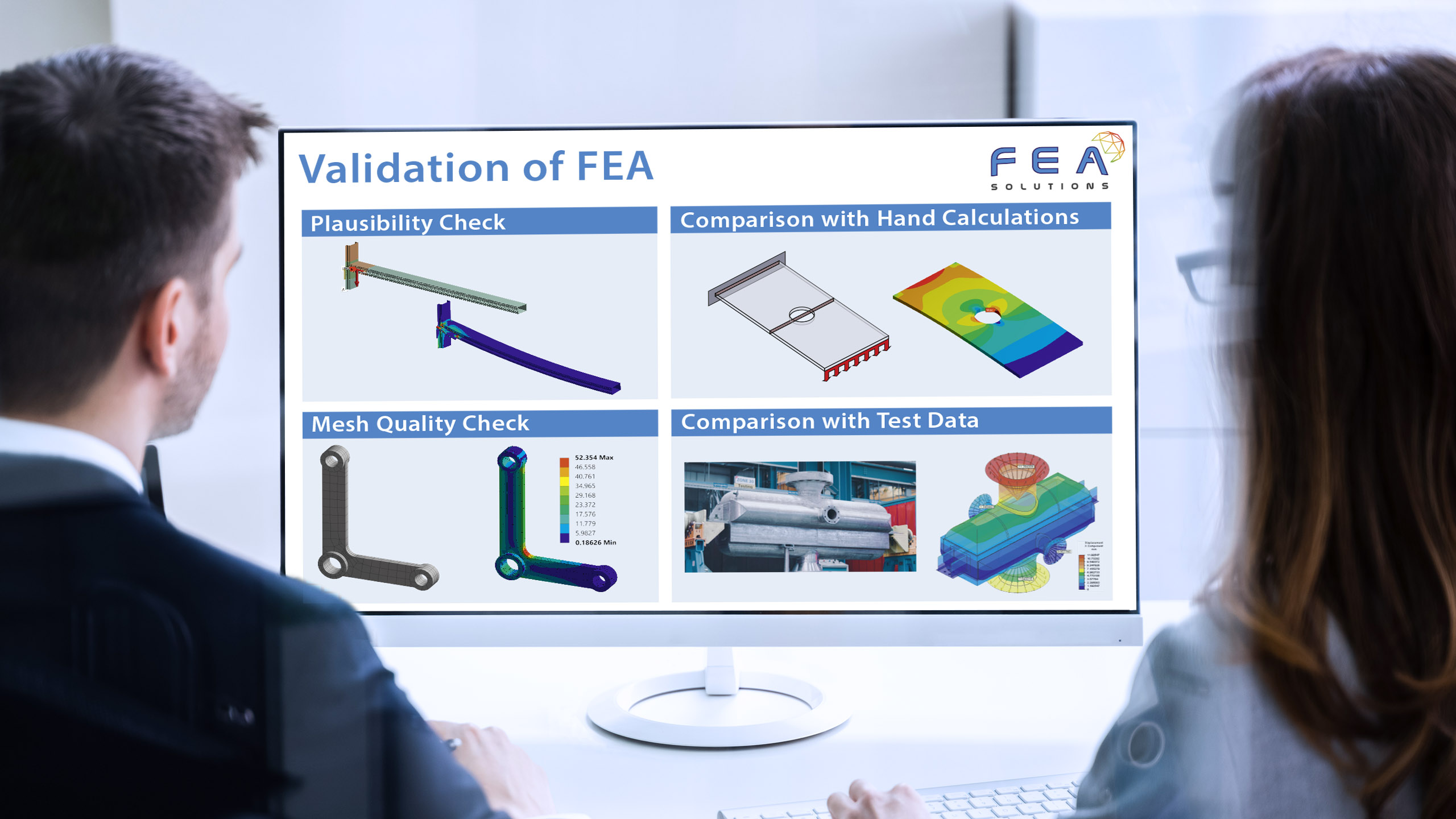
15 Jun Validation of FEA
For any FEA model, the results have to be validated. There are different methods how do this:
– Plausibility check
– Comparison with hand calculations
– Mesh quality check
– Comparison with test data
The first and most important step for FEA validation is the plausibility check. This is to ensure that:
– The deformation shape and magnitude are as expected.
– The stress peak location and magnitude are as expected.
If any of the above is not as expected, the discrepancy has to be investigated until the reasons are understood.
If the structure being analysed is simple enough, hand calculations can be done to validate the FEA results (https://fea-solutions.co.uk/handcalc-vs-fea/). The difference should be within a small margin, e.g. the FEA results should be within 5% of the hand calculation results. However, hand calculations are severely limited when anything other than very simple structures are analysed. In the case of a discrepancy, the FEA results are more realistic in most cases. Hence, comparison with hand calculations frequently cause more confusion than clarity.
Checking the mesh quality by a mesh convergence (https://fea-solutions.co.uk/mesh-convergence/) and stress singularity study (https://fea-solutions.co.uk/stress-singularities/) will show if the peak stress magnitude is realistic. It will however not help determining if a modelling or input error has occurred.
If the structure has undergone a physical test, then the FEA results can be compared directly to what happened in the real world. However, as one of the reasons for conducting FEA is to avoid physical tests, this validation method is rarely practical.
If there are any doubts about the accuracy of FEA results, the way the structure has been modelled has to be checked. This will include the loads, constraints, material properties, contact definitions and mesh.
Give us a call today on +44 (0)1202 798991 and discuss any engineering analysis requirements you might have.
